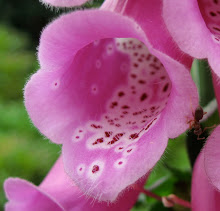
I created this blog to go along with coursework I'm taking in Education Technology and Information Literacy. As a classroom teacher of high school science, I hope to contribute to the discussion surrounding the evolving role of technology in learning.
I've noticed that blog names often involve some sort of fun wordplay -- something "punny". "Science in Flower" is meant to evoke a positive image of science producing useful and helpful results (assuredly aiding and aided by technology) as well as refer to my favorite of the experimental sciences, biology. It is also an homage to Richard Feynman, the Nobel Prize-winning physicist who said:
I have an artist friend and he sometimes takes a view which I don't agree with very well. He'll hold up a flower and say, "Look how beautiful it is!" and I'll agree. And he says, "I, as an artist, can see how beautiful this is, but you as a scientist take it all apart and it becomes a dull thing." And I think he's kind of nutty.First of all, the beauty he sees is available to me, too, I believe. Although I may not be quite as refined aesthetically as he is, I can appreciate the beauty of a flower.At the same time, I see much more about the flower than he sees. I could imagine the cells in there, the complicated actions inside which also have a beauty. I mean, it's not just beauty at this dimension of one centimeter: there is also beauty at a smaller dimension, the inner structure... also the processes.The fact that the colors in the flower are evolved in order to attract insects to pollinate it is interesting -- it means that insects can see the color. It adds a question -- does this aesthetic sense also exist in the lower forms... why is it aesthetic, all kinds of interesting questions which a science knowledge only adds to the excitement and mystery and beauty and awe of a flower.It only adds. I don't see how it subtracts.
This story has been very meaningful for me as someone who did not come directly to a career that deals daily with the rules and rigor of science. As as student, I felt more aligned with the arts than the sciences. It wasn't until college that I discovered my love for biology. I cherish not only the deep satisfaction of understanding, but the excitement and joy I find continuously when studying the living world.
It is sometimes difficult to communicate this enthusiasm to students in a classroom setting. Some technological advances have helped -- the vivid colors of a projected image, the instant retrieval of details when students ask an illuminating question, the interactive animations of sub-microscopic processes. I look forward to learning new tips and technologies to further aid my students' learning and encourage the growth of their academic passions.

Beautifully written, Patience. I totally connect with where you're coming from -- seeing the beauty in the details, the interconnected parts, the inner workings -- and for me also then knowing of the universality in these smallest details and inner workings giving rise to an amazing diversity on a global scale.
ReplyDelete